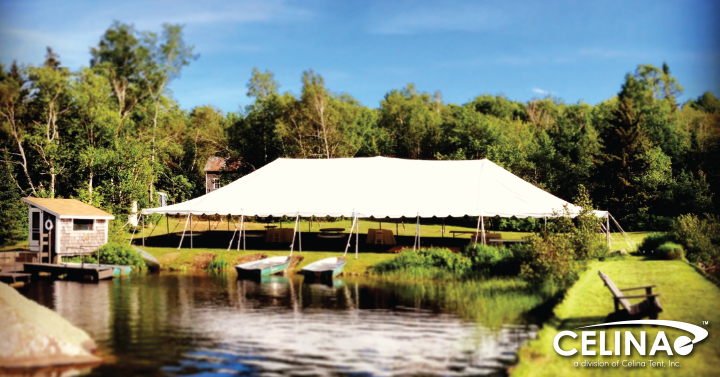How Time Affects Your Vinyl Tent Fabrics

Vinyl Time – The Effects of Aging on your Tent
There are many different actions that you can take as the owner of a vinyl fabric tent that will help you to extend the life of your item. Making sure that you don’t over-tension the fabric, keeping it clean of debris and soil, making sure to use safe cleaners before drying and putting it away. Much can be done to ensure that your tent will be useful and full of life for years to come.
However, just as we humans eventually start to show the signs of age, so too will your tent one day. “But Mr. Blogwriter, what can be done?!?” you may be loudly shouting at your computer screen as you read these words of woe. And I, from across the ether, will only sadly shake my head at what I imagine must be your deepest chagrin. For there is nothing that can be done to stave off the inevitable end of your fabrics. Let’s take a closer look!
1-5 Years
At this point in the life of your shelter, the fabric is newly crafted into its final form and has its whole life ahead of it. This is the time when the fabric is newest, and so has the most even distribution of plasticizers. These chemicals are part of the polyvinyl chloride (PVC) layers on the scrim. The addition makes the PVC much less brittle than it naturally is, allowing the entire fabric to bend and fold easily. Being able to move keeps the fabric from cracking through common use in wind and weather, and also during installations and just moving the fabrics around.
6-9 Years
Plasticizers mentioned above have a very strange way of behaving – they aren’t actually bound to the molecules that make up your PVC. Because of this, the plasticizers actually begin to migrate or diffuse out of the vinyl. They gasify over time, leaving your fabric for adventures in the great wide world. As your tents or sidewalls are aging, more and more of the plasticizers are leaving the fabric and reducing the overall flexibility. Also, sidewalls may decide to buy a sports car and start dating younger tents.
Now is the time when harsh cleaners can really start to take a toll on the fabric. Chemicals made to really grind off the grime reduce the life of fabrics, and repeated cleanings may start to show evidence of either physical wear (possibly exposing the internal scrim, leading to scrim mold) or possible discoloration. Always try to use mild cleaners or those created specifically for tents when caring for your fabrics.
10+ Years
If your tent has lasted this long, congrats! It’s reached the ripe old age of “ancient” as far as vinyl fabric goes. Now is when you really start to see two things:
- First, all of the care you’ve taken to make sure your tent top will last will be paying off. You can brag to other tent installers about the condition of your tent (if that’s a thing you’d like to do), or marvel all to yourself about how great it still looks.
- Secondly, a large amount of the plasticizers will have migrated out of the fabric by now. Proper storage in adequate temperatures will have slowed the process, but the fabric will be much less flexible than you may recall from the beginning. Leaving these kinds of tents or accessories installed in cold and windy conditions will most certainly lead to cold crack, as the PVC will be extra brittle due to the cold and crack under the strain of buffeting in the wind.
Taking good care of your tent makes for happier tents and much longer usage life for each individual piece, but just like people they aren’t going to be around forever. Planning ahead with proper care lets you be the judge when deciding to start replacing your inventory. You can visit the Celina Tent Product Support for more on vinyl care and treatment or give us a call at (866) 438-8368 (email: sales@gettent.com) if you’d like to know more. Drop us a line – we’re glad to help out any way we can!
